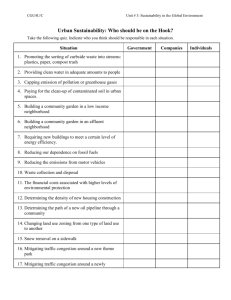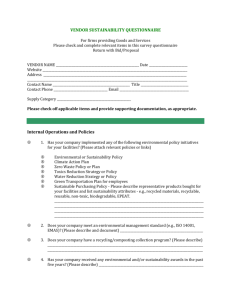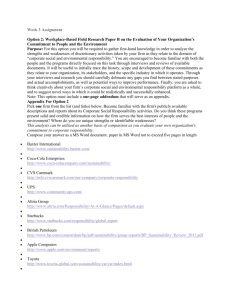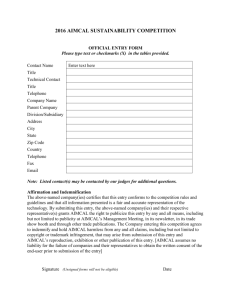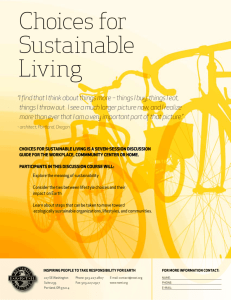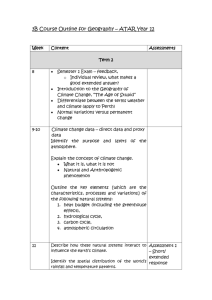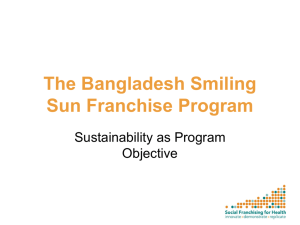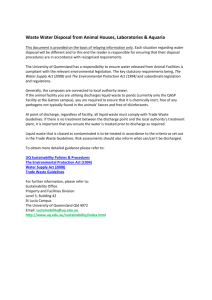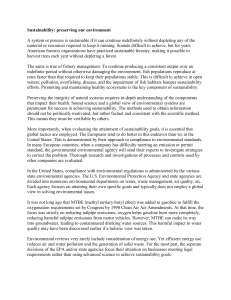SWOT Analysis of EPA*s Pollution Prevention Program
advertisement
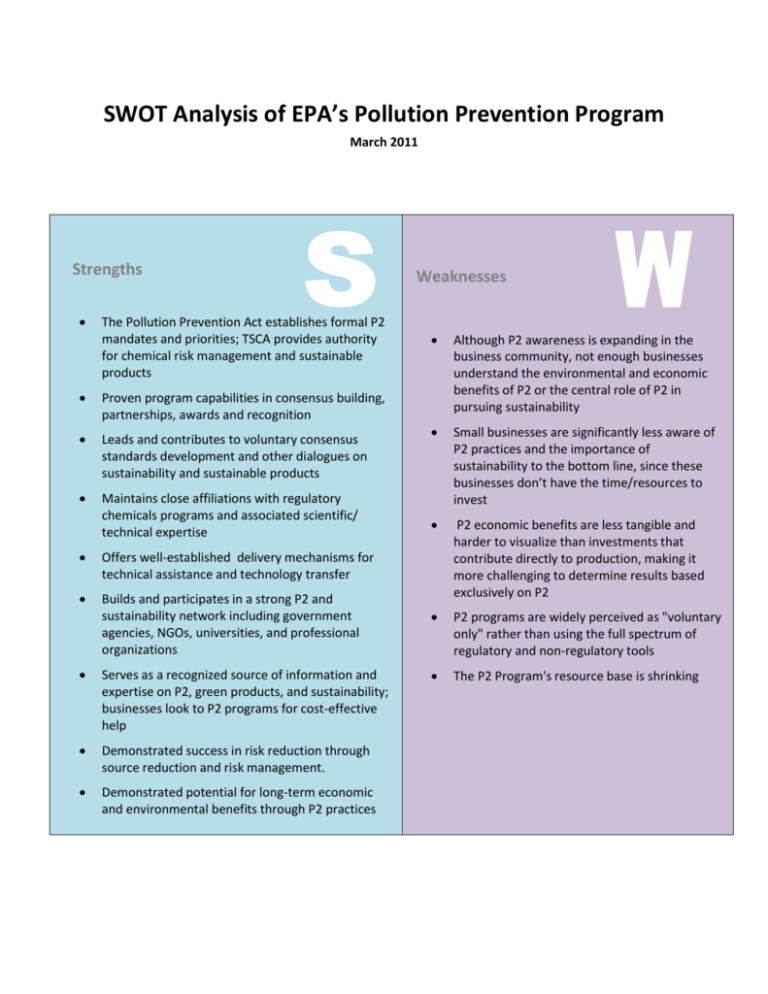
SWOT Analysis of EPA’s Pollution Prevention Program March 2011 Strengths The Pollution Prevention Act establishes formal P2 mandates and priorities; TSCA provides authority for chemical risk management and sustainable products Proven program capabilities in consensus building, partnerships, awards and recognition Leads and contributes to voluntary consensus standards development and other dialogues on sustainability and sustainable products Maintains close affiliations with regulatory chemicals programs and associated scientific/ technical expertise Offers well-established delivery mechanisms for technical assistance and technology transfer Builds and participates in a strong P2 and sustainability network including government agencies, NGOs, universities, and professional organizations Serves as a recognized source of information and expertise on P2, green products, and sustainability; businesses look to P2 programs for cost-effective help Demonstrated success in risk reduction through source reduction and risk management. Demonstrated potential for long-term economic and environmental benefits through P2 practices Weaknesses Although P2 awareness is expanding in the business community, not enough businesses understand the environmental and economic benefits of P2 or the central role of P2 in pursuing sustainability Small businesses are significantly less aware of P2 practices and the importance of sustainability to the bottom line, since these businesses don’t have the time/resources to invest P2 economic benefits are less tangible and harder to visualize than investments that contribute directly to production, making it more challenging to determine results based exclusively on P2 P2 programs are widely perceived as "voluntary only" rather than using the full spectrum of regulatory and non-regulatory tools The P2 Program's resource base is shrinking Opportunities More fully engage EPA leadership to highlight the central role of P2 as the cornerstone of sustainability. Pursue multimedia, market-based, sustainable solutions for businesses, the public sector, and others Work with other agencies to more fully leverage resources to achieve greater reductions in greenhouse gasses, hazardous materials, and the use of natural resources Contribute to a greener and more sustainable economy through the implementation of P2 practices Increase business revenues and significant cost savings through the implementation of P2 practices Use P2 life-cycle opportunities and expertise in chemicals in products to reduce health and environmental impacts throughout key industry sectors Use the current regulatory review process (EO 13563) to include P2 options and remove P2 barriers in regulations Threats Challenges associated with measuring results of programs closely associated with voluntary activities makes them particularly vulnerable for resource reductions or suspension Competition for resources and attention with deadline-driven regulatory programs Reduced P2 programmatic resources and P2 state and regional grants complicates the ability to advance region-specific P2 practices and implement programs on a national level



